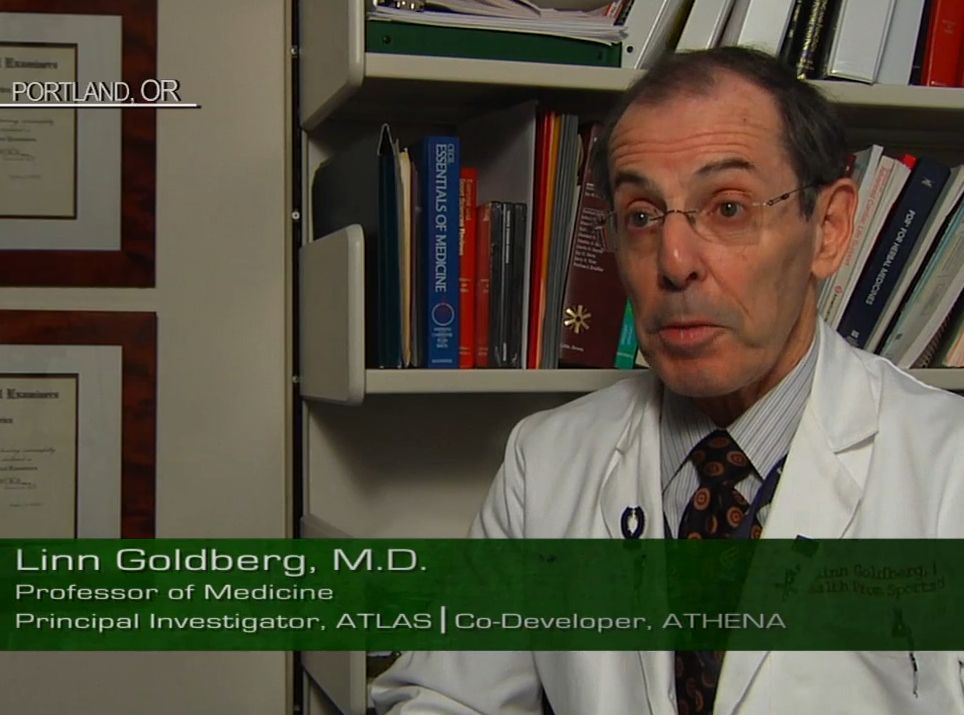
Catching high school athletes who used anabolic steroids was apparently never the primary goal of the Texas steroid testing program. According to a published report, state legislators say the main goal of the $3 million per year investment was to serve as a strong deterrent.
But Dr. Linn Goldberg, M.D. is not very optimistic about the deterrent effect of steroid testing in high schools.
Linn Goldberg, a national drug-testing expert and the head of the division of health promotion and sports medicine at Oregon Health & Science University, said drug testing, as yet, is not a deterrent to use. There’s no evidence that it is.
He called the Texas steroids program a knee-jerk reflex so they can say they’re doing something.
His Oregon Health and Science University research team recently completed a study that arrived at these conclusions. (See Goldberg, L., et al. (2007) Outcomes of a Prospective Trial of Student-Athlete Drug Testing: The Student Athlete Testing Using Random Notification (SATURN) Study. Journal of Adolescent Health, 41(5):421-429.)
Goldberg has been an outspoken opponent of steroid testing for some time now and has mounted a campaign against steroid testing in schools:
The big thing that people say is you got to give kids a reason not to use drugs, and drug testing is a reason… That’s not what we found. You can look at testing as a way to catch an early addiction, but as a deterrent, which this study was looking at, we didn’t find any evidence that testing was a deterrent.
Diane Elliot, M.D., co-investigator and doping control officer with United States Anti-Doping Agency (USADA) backs up Goldberg and takes direct aim at the trendy high school steroid testing programs:
This was a state-of-the-art collection and testing program that exceeded those of typical school testing programs. If this did not show significant deterrent effects, less-sophisticated programs are not likely to be more successful.
Linn Goldberg explained to the New York Times that steroid testing doesn’t work as a deterrent because so many people test positive:
If drug testing was so great, if it was so wonderful, we wouldn’t have anybody test positive… People would be scared of testing positive and being thrown out; you have a lot of people who test positive.
Linn Goldberg, in same New York Times interview, explains that steroid testing doesn’t work when no one tests positive either:
They had a ton of drug users; they’re just not catching them. They’re happy as can be that they think they’ve got just a wonderful program. In reality, kids are using just as many drugs and the administrators are walking around in their dream world.
So, if steroid testing catches a lot of high school steroid users, it is not an effective deterrent. And if it catches few steroids users, it is still not an effective deterrent. According to Goldberg, steroid testing does not work regardless of the outcome.
What really bothers Linn Goldberg is that if all the federal and state funds are squandered on steroid testing, then there won’t be any money left to fund steroid education programs (like maybe his ATLAS and ATHENA steroid education programs that have been the primary beneficiary of federal funds earmarked for ‘steroid education’ after the passage of the Anabolic Steroid Control Act of 2004!)
Here’s what I see is the big problem: If you put in drug testing and you think it works, then you’re not going to put anything else in. You’re not going to care about anything else because you probably feel, ‘We’ve taken care of it.’
The truth comes out. Things are not always what they seem. Linn Goldberg has a clear conflict of interest since federal and state funds for “steroid education” and “steroid testing” are limited and tend to compete against each other.
I don’t understand why journalists are not more critical of Dr. Goldberg, his conflict of interest, the appearance of bias, and history of pandering for federals funds for his “steroid education” programs.
I tend to agree with Linn Goldberg’s assessment of state steroid testing programs. But I am also critical of steroid education programs too.
The New York Times wonders if the “focus on testing at the high school level is a deterrent or a burgeoning cottage industry.” The NY Times then concludes we should just give money to everyone and hope something works:
What the study makes clear is that there is a need for education and detection. This is not an either/or proposition.

About the author
Millard writes about anabolic steroids and performance enhancing drugs and their use and impact in sport and society. He discusses the medical and non-medical uses of anabolic-androgenic steroids while advocating a harm reduction approach to steroid education.

Leave a Reply
You must be logged in to post a comment.